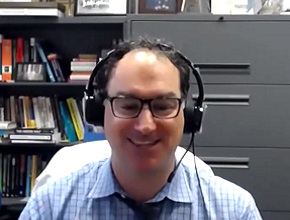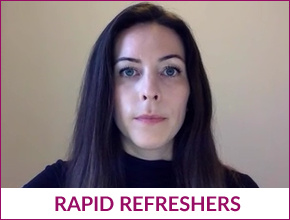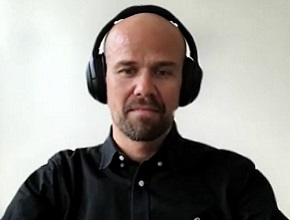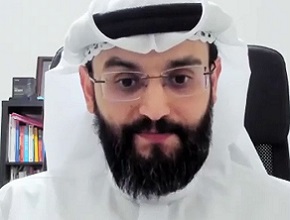Dr Jean-Louis Vincent, professor of intensive care medicine at Université libre de Bruxelles, Belgium, past president of the World Federation of Societies of Intensive and Critical Care Medicine, and accomplished author and researcher, joins Dr Roman Jaeschke in the newest McMaster Perspective episode to comment on the latest Surviving Sepsis Campaign 2021 guidelines.
For part 1 of the interview, click here.
Roman Jaeschke, MD, MSc: Good morning again. [Let’s] welcome Professor Jean-Louis Vincent, who gave us his own practice guidelines during the part 1 of the discussion on Surviving Sepsis Campaign. What I would like to do is to explore his views in the areas that were addressed by Surviving Sepsis [Campaign] as well. The first one, Jean-Louis, is the issue of screening. There is a recommendation to use screening for sepsis, I guess among people who are acutely ill. And, you know, when people talk about screening, immediately the quick Sepsis-related Organ Failure Assessment (qSOFA) and Systemic Inflammatory Response Syndrome (SIRS) come to mind. How do you screen your patients for sepsis?
Jean-Louis Vincent, MD, PhD: Well, there are 2 approaches because sepsis is infection plus organ dysfunction. One approach is infection—you identify the infection. And then you wonder: “Is there an associated organ dysfunction, which is not necessarily part of the source of infection?” But, you know, if the patient is obtunded, if urine output is low, or if there is a low platelet count, that means this is a severe infection—that’s what we call sepsis.
The other approach is when you see a patient with organ dysfunction and you are not sure you understand the cause... Why is this patient dyspneic and I cannot see much in the lungs? Why is urine output going down and there is no good reason for it? So, then you wonder: “Is there an associated infection?” And these are the 2 approaches. I proposed them a while ago in The Lancet. That’s really the best way to approach it.
SIRS—it’s ridiculous, totally ridiculous. SIRS—it’s fever, altered white blood cell count, tachycardia... These are signs of infection. As a clinician, if you don’t know what an infection is, you do not deserve a diploma, I’m sorry. You need to go back to the first year of medical school. If you don’t know that fever may be an infection—may be not but usually it is an infection—you don’t know the ABC of medicine. So, SIRS is totally, totally useless.
The qSOFA... I was part of the consensus conference on this. I didn’t like it very much because the qSOFA... First of all, people don’t even remember what it is, but if it’s hypotension, tachypnea, and altered mentation, you know, that can be abnormal in any form of “shock” or almost shock, some people would say preshock or impending shock. If the patient has severe heart failure, the patient will be somewhat hypotensive, will be tachypneic, and will be a bit confused. So, is it sepsis? No, no, that’s heart failure. If there is hypovolemia, if there is a patient with trauma coming in, this patient may be hypotensive, tachypneic, and obtunded. That’s sepsis? No, no, no, it’s just (…) trauma. And pulmonary embolism likewise. So, if there is a hemodynamic impairment, then we need to think of the 4 potential pathophysiologic alterations: hypovolemia, cardiac pump problem, obstruction—like in pulmonary embolism or distributive like in septic shock or anaphylactic shock. So, that’s the approach.
If the patient looks bad, we don’t need a sepsis team. We need a rapid response team. We need to have doctors coming in to evaluate the patient. So, if you think of a sepsis team, then you must have a cardiac failure team, and you must have a pulmonary embolism team... And what, we will call all the teams when you don’t know what’s going on? No, of course not. We need rapid response systems (RRS) in every single institution, 24 hours a day, 365 days a year.
Roman Jaeschke: All right. Well, that’s quite a tirade about both qSOFA and SIRS. At least I would argue they could serve to teach those who are uninitiated, if you wish, in medicine.
Jean-Louis Vincent: Yeah, you are right, but do you need to remember what qSOFA is all about? Any medical student should recognize that hypotension is not normal...
Roman Jaeschke: All right, that is correct...
Jean-Louis Vincent: That altered mental status is not normal and that tachypnea is not normal. They need to pay attention to tachypnea.
Roman Jaeschke: Yes. My favorite saying is that it’s better to be young and healthy than sick and older. And these are the indications that you are sick effectively. Jean-Louis, are you using capillary refill [time]? That’s one of the first time[s] the suggestion of using it was [made]. You mentioned the static or dynamic measurement…
Jean-Louis Vincent: Yes, I know, I’ve just given a talk on this at the European Society [of Intensive Care Medicine Congress] last week. I think it’s fundamentally important to evaluate skin perfusion. When I was in training, Dr [Max Harry] Weil was measuring the toe temperature because he was saying: “If the skin is cold, that’s a sign of poor tissue perfusion. Why don’t we measure it?” And I think he was right. The problem with the capillary refill time... I like to look at it, but the problem is that it is difficult to quantitate it. So, you may say: “Oh, you can teach your nurses to do that.” Yeah, but, you know... Is it 2 seconds, 3 seconds, 4 seconds? Oh... So, there are even automated systems, there are even small instruments that could quantify it. I don’t think that it’s precise enough. As you may have seen, we have an interest in laser Doppler techniques to evaluate skin perfusion. We have a couple of papers published on this recently, and I think that may be better than the capillary refill time. Capillary refill time is very simple, I agree. Very simple, but it’s not that accurate. Let’s look at skin perfusion—yes. Capillary refill time—maybe.
Roman Jaeschke: Well, maybe when the same person is evaluating it over a few-hour period of time at the bedside and looking at urine output and capillary refill [time], and blood pressure, and level of consciousness... Maybe that would be one of those dynamic measures that people are advocating, but...
Jean-Louis Vincent: As I said, we need to look at skin perfusion. That’s very, very important. But capillary refill time... It’s 2 or 3, or 4 seconds. That’s very hard to measure very precisely.
Roman Jaeschke: What do you think about the 6-hour window for admission to an intensive care unit (ICU) of a patient who is septic? That’s probably a difficult discussion among panelists, but they came up with these 6 hours.
Jean-Louis Vincent: My answer can be summarized in 1 word: ridiculous. Ridiculous. I mean, then, if I go and if I see a patient who has been evaluated by others on the floor and I see the patient has been here for 5 hours and you have not really monitored the patient adequately... They would say: “Well, guidelines say I still have 1 hour. I have up to 6 hours.” It’s ridiculous. If the patient is very sick, bring the patient in the ICU in 5 minutes. I give you 5 minutes and [bring the patient] now. If you have a patient who may benefit from some interventions on the floor, you are not sure that the patient should come to the ICU—that’s another story. Or if you are looking at a patient who has a terminal cancer, you should not bring the patient to the ICU at all. But this is not mentioned in the guidelines that we should not bring a patient with a terminal disease with sepsis to the ICU. Do you remember... It’s a paper I often quote in my talks, it’s an editorial in the JAMA Internal Medicine of a doctor saying “Does my mother need this central venous catheter?” It’s a doctor who wrote about the Surviving Sepsis Campaign guidelines from several years ago, where the lady came in the hospital with sepsis and the doctor looked at the guidelines and started to do everything. But the mother had Alzheimer disease. She was coming from a nursing home with palliative care only. Why can’t we leave some patients [to] die? In some cases, you should not admit in the ICU at all. In many cases you need to admit the patient to the ICU right now, right away. That’s the big problem with the 1-hour bundles. People have used 1-hour bundles because they were proposed by leaders. We were not consulted on these bundles, I can say, but they are wrong. You don’t have 1 hour to measure lactate levels. Five minutes. You don’t have 1 hour to start fluid administration. Five minutes. You don’t have 1 hour to start noradrenaline (norepinephrine) infusion if hypotension is severe. Five minutes. So, [where] are these 1-hour bundles coming from? It slows down your process. We need to urge people to act fast. You know, in the field of trauma, we have abandoned the golden hour of trauma. This was proposed in 1975 and has been abandoned (…). And in the field of sepsis, they [say]: “Oh, we need to do as they used to do in trauma.” No, every minute counts. Myocardial infarction? Same thing. Cerebrovascular accident? Same thing. Don’t think you have 3 hours to treat a cerebrovascular accident. You have really short time and every minute counts.
Roman Jaeschke: Knowing the intent of the panelists, I’m sure the issue of urgency is extremely clear, but the editorializing which you are giving us now is also extremely important. Obviously, we are taking into account situations where we could act within 5 minutes. You have to have the infrastructure or you have to have people who can perform. We are in a fortunate situation both in Belgium and in Canada that under normal conditions we can do it, but even coronavirus disease 2019 (COVID-19) makes us a little bit more humble these days, because sometimes we run out of a possibility of acting the way we wish. But I think the most important message is [to] move as fast as possible rather than within a rigid number of hours. Let me see what else I wanted to ask you, as I’m interested in your own practice. Are you using procalcitonin (PCT) in your critical care practice at all?
Jean-Louis Vincent: We use it for some clinical trials but not routinely, primarily for a cost issue. It’s not very costly, I agree, but if you use it routinely and if you have many septic patients as we do, at the end of the year, it’s a huge amount of money. And the trials have shown that C-reactive protein (CRP)—not in absolute levels, but if you look at kinetics, once again, as for lactate levels before—can be very valuable, and CRP levels are just very, very cheap, they don’t cost anything in our institution. And that’s true [for them] as markers, as we call them, alone, because we should not decide on a single test. So, together with the clinical evaluation, with the source of sepsis, the type of the microorganism, the sepsis markers, kinetics can be very helpful. If the CRP and PCT go down very nicely—that’s good. If they don’t go down, if they do go up—again, it’s not clearance, it’s production—it's [for] the worse.
Roman Jaeschke: The other question, which is probably open to a major dispute... There is a suggestion of using balanced crystalloids rather than normal saline, or sodium chloride pure solution. What do you use? Do you think about it when you are resuscitating?
Jean-Louis Vincent: Well, first of all, I don’t think it’s what you use, what they use. We should all do the same thing if we think [about] the issue. If you give a saline solution 0.9%, we know it has 154 mEq of chloride per liter. That’s true in Canada, in Belgium, anywhere in the world, so that’s 50% higher than our chloride levels. So, no doubt about the fact that the chloride levels will increase in the blood, so that will result in hyperchloremia. Is it wrong? Any abnormality is wrong. Don’t tell me that you have an abnormality that you are very happy about, being [it] your cholesterol, being [it] your potassium, being [it] glucose, being [it] your whatever... creatinine—when it’s abnormal, it’s always bad. But hyperchloremia—it was shown 40 years ago—is bad for the kidneys. [Those were] very nice studies showing how it can induce vasoconstriction within the kidney and alter intrarenal hemodynamics. So, no doubt about the fact that hyperchloremia should be avoided. Does it mean that saline solution should be avoided? No, no, no, no, I didn’t say that. I use saline every day, but I monitor chloride levels. When chloride levels go up, I stop giving saline and I give a balanced solution. Isn’t it the same for potassium? Is potassium bad? No, I look at potassium levels, and if they tend to be a bit low, I increase the potassium levels in the intravenous (IV) fluid. If they tend to be high, I decrease... Why can’t we do the same with chloride or with sodium? That’s what we do with sodium. How come that people make it either too simple or too complex, but why can’t we just recognize that we need to monitor chloride levels and stop giving chloride when the chloride levels are increased, because we are concerned about kidney function? That’s as simple as that. We don’t need a large, prospective, randomized controlled trial on this. It’s basics of medicine, ABC of medicine, once again.
Roman Jaeschke: OK, well, chloride and sodium... What’s your pattern of practice of [sodium] bicarbonate use? They [sodium bicarbonate levels] can be quite abnormal as well. Do you use them?
Jean-Louis Vincent: Well, virtually never. We learned that for diabetic ketoacidosis, there is no room for it because you will correct it quite quickly. In the field of shock, the same thing is true. If it’s severe lactic acidosis, do as what we said with fluids, vasoactivations, transfusion (if required), and things should get better. And so, there is no need for [sodium] bicarbonate administration. Now, there is a little bit of evidence from Montpelier, from [Professor] Jaber, [published] in The Lancet recently, suggesting that [sodium] bicarbonate administration may somewhat help the kidneys. So, there may be a little bit of a small place for [sodium] bicarbonate in severe acidemia, but I would not use it routinely. No, and nobody does actually.
Roman Jaeschke: OK, that’s useful again. You mentioned the use of dobutamine, you already addressed that. Now the question that frequently comes to my mind... Everybody these days advises [us] to use a higher rather than lower positive end-respiratory pressure (PEEP), but I’m having trouble finding what it means to who. What is higher PEEP to you? Where do you start? Where do you look for? Where do you default to?
Jean-Louis Vincent: Can we have a patient on the screen and the associated values? You know, you are asking me a question that is anti personalized medicine. My answer is very simple: I look at the patient, I look at the degree of alteration in gas exchange, I look at lung mechanics, and if I see that the hypoxemia is severe, that the P/F ratio is quite low, I tend to increase the PEEP level. Now, the plateau pressure should not increase too much and I look at plateau [pressure], PEEP, and the difference between the 2. All of this is important. And I look at the hemodynamic effect, because if the higher PEEP level impairs the right ventricular function in particular, this needs to be taken into account as well. So, that’s really where you need an ICU physician. Let’s collect the data and let’s evaluate these data. In general, it’s true [that] trying to avoid PEEP is wrong. Today we are rather generous with PEEP levels provided that there is no hemodynamic compromise.
Roman Jaeschke: Well, I want to finish here by stating that I learned personally from your individualized approach. I also learned from reading Surviving Sepsis [Campaign] practice guidelines. I think both approaches have major positive effects. We need to start somewhere—especially when, you know, we are, I believe, teaching people or trying to educate, or bringing new people to the field. And then the individualized approach and hearing from an expert who wrote those guidelines for so many years is invaluable. I want to thank you very much for sharing your views with us and I hope they will be of use not only to our clinicians but also to our patients. Thank you very much again. It’s fantastic that you shared your views with us.
Jean-Louis Vincent: It’s a pleasure. Thank you for having me. Take care.
Roman Jaeschke: Hope to see you again. Goodbye.
 English
English
 Español
Español
 українська
українська











